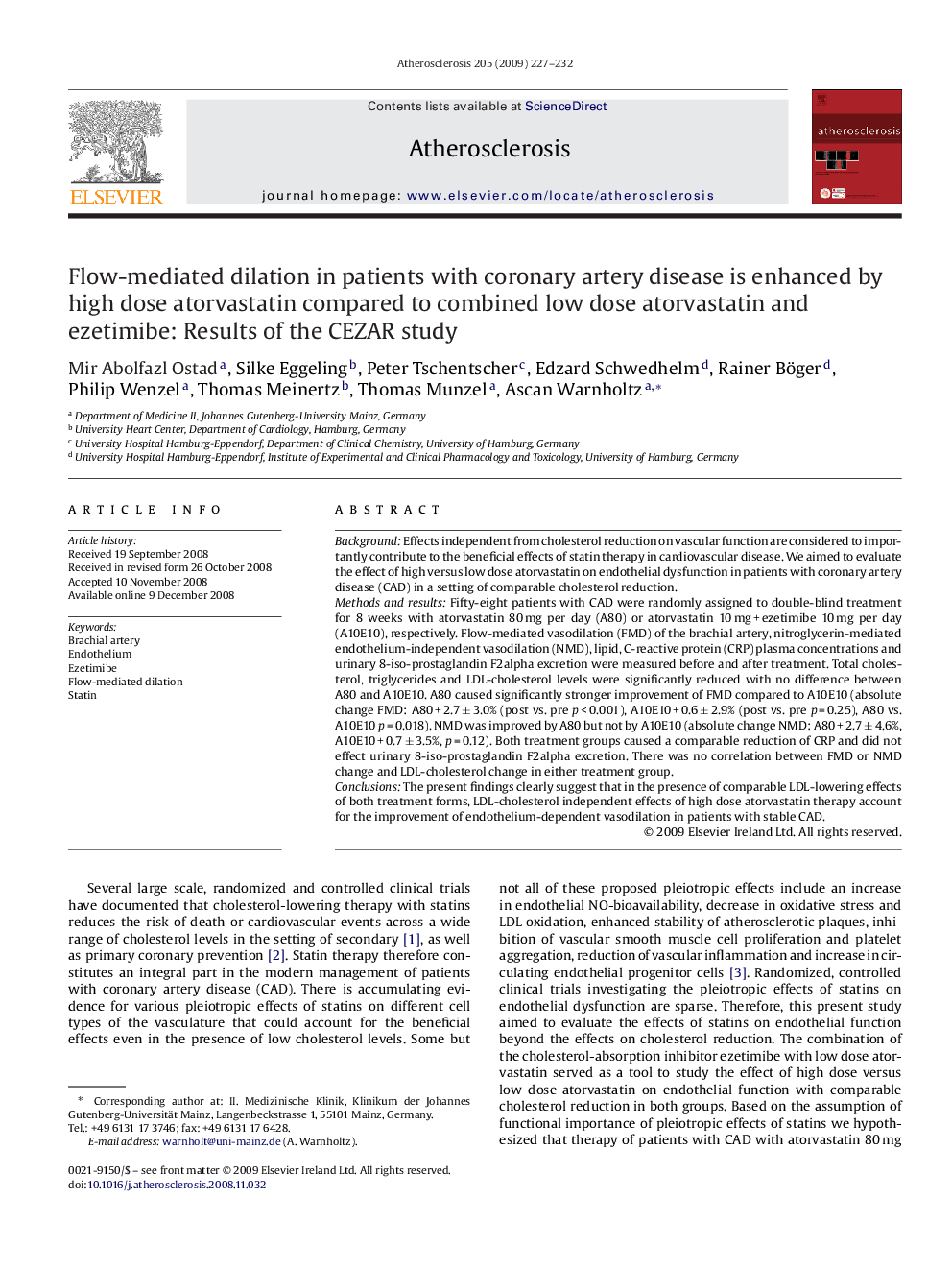| کد مقاله | کد نشریه | سال انتشار | مقاله انگلیسی | نسخه تمام متن |
|---|---|---|---|---|
| 5951067 | 1172407 | 2009 | 6 صفحه PDF | دانلود رایگان |

BackgroundEffects independent from cholesterol reduction on vascular function are considered to importantly contribute to the beneficial effects of statin therapy in cardiovascular disease. We aimed to evaluate the effect of high versus low dose atorvastatin on endothelial dysfunction in patients with coronary artery disease (CAD) in a setting of comparable cholesterol reduction.Methods and resultsFifty-eight patients with CAD were randomly assigned to double-blind treatment for 8 weeks with atorvastatin 80 mg per day (A80) or atorvastatin 10 mg + ezetimibe 10 mg per day (A10E10), respectively. Flow-mediated vasodilation (FMD) of the brachial artery, nitroglycerin-mediated endothelium-independent vasodilation (NMD), lipid, C-reactive protein (CRP) plasma concentrations and urinary 8-iso-prostaglandin F2alpha excretion were measured before and after treatment. Total cholesterol, triglycerides and LDL-cholesterol levels were significantly reduced with no difference between A80 and A10E10. A80 caused significantly stronger improvement of FMD compared to A10E10 (absolute change FMD: A80 + 2.7 ± 3.0% (post vs. pre p < 0.001), A10E10 + 0.6 ± 2.9% (post vs. pre p = 0.25), A80 vs. A10E10 p = 0.018). NMD was improved by A80 but not by A10E10 (absolute change NMD: A80 + 2.7 ± 4.6%, A10E10 + 0.7 ± 3.5%, p = 0.12). Both treatment groups caused a comparable reduction of CRP and did not effect urinary 8-iso-prostaglandin F2alpha excretion. There was no correlation between FMD or NMD change and LDL-cholesterol change in either treatment group.ConclusionsThe present findings clearly suggest that in the presence of comparable LDL-lowering effects of both treatment forms, LDL-cholesterol independent effects of high dose atorvastatin therapy account for the improvement of endothelium-dependent vasodilation in patients with stable CAD.
Journal: Atherosclerosis - Volume 205, Issue 1, July 2009, Pages 227-232